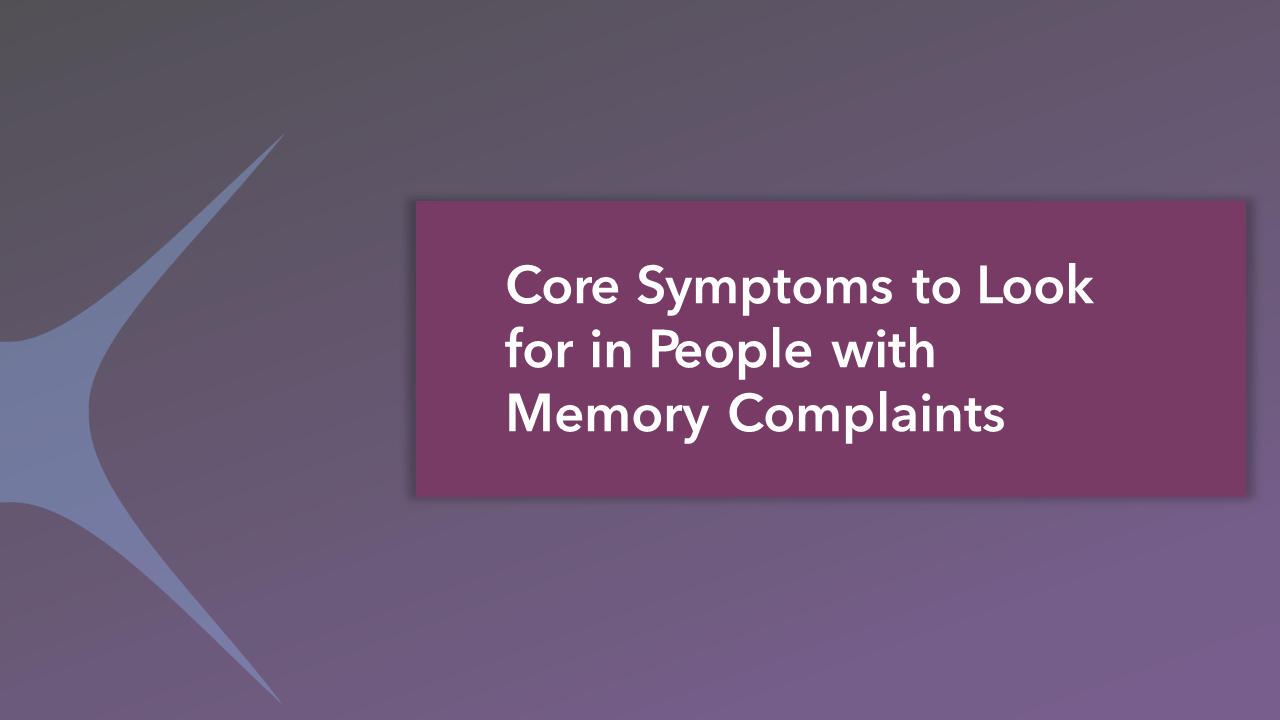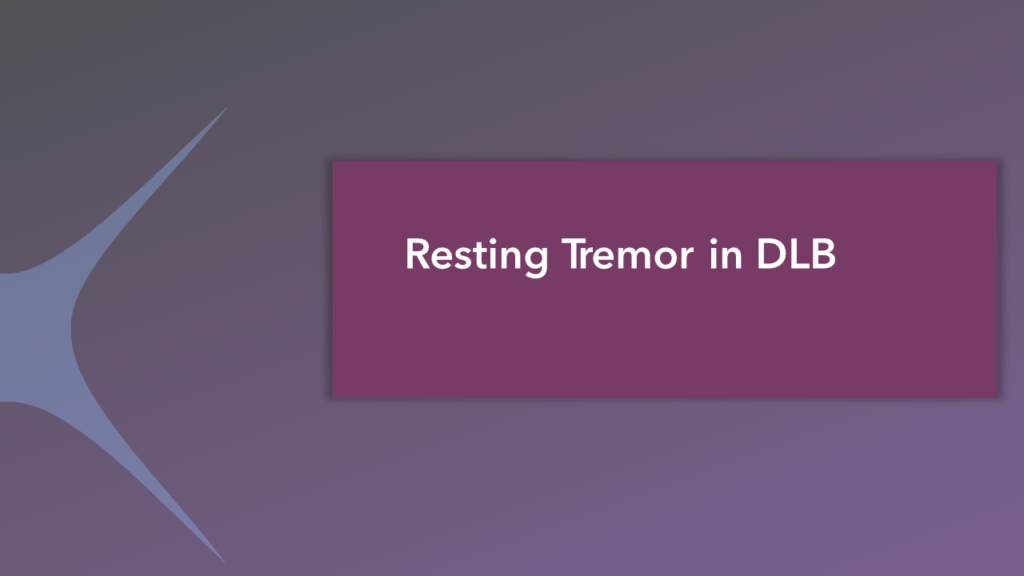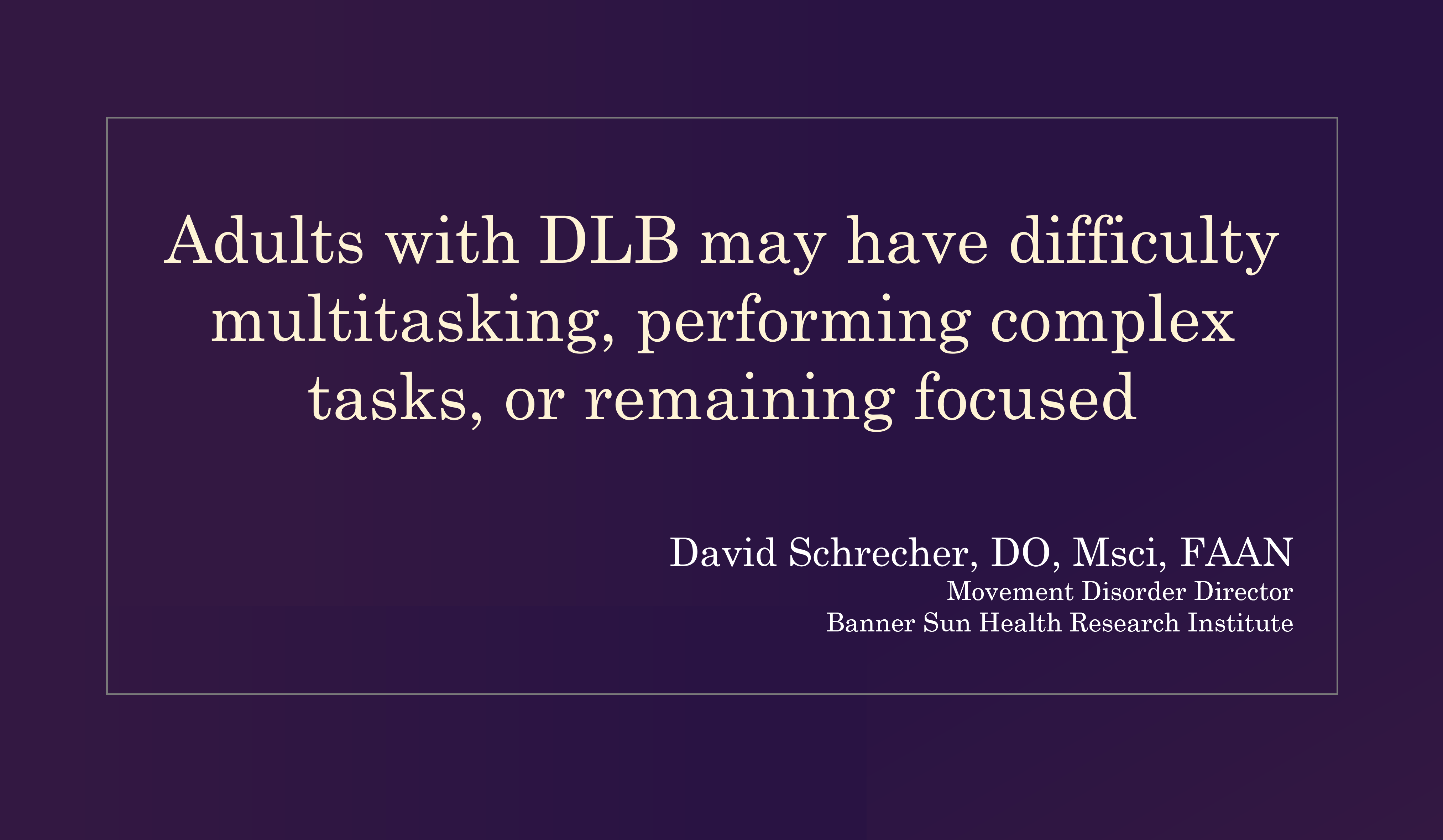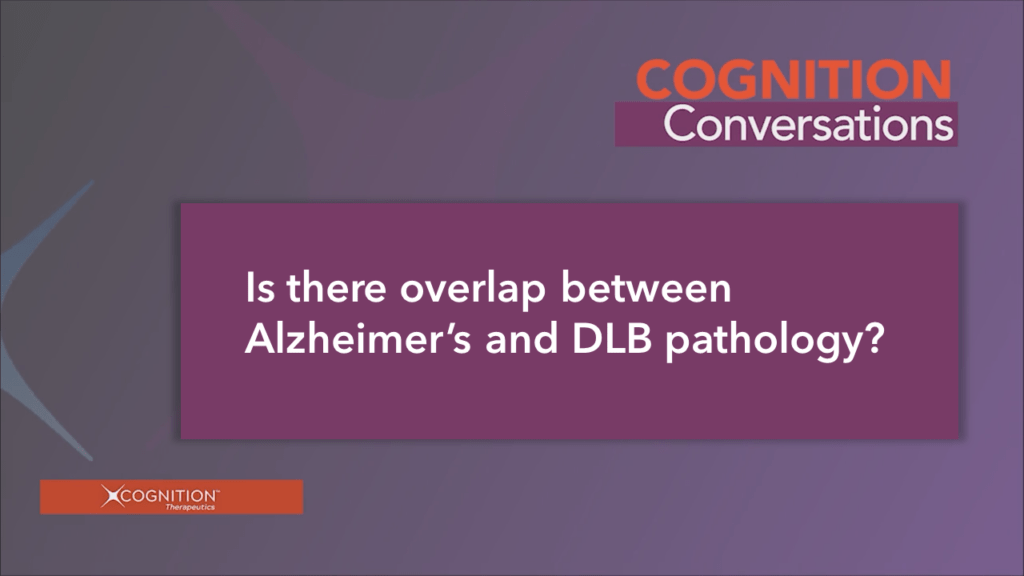Dementia with Lewy Bodies
There are no approved medications for dementia with Lewy bodies (DLB) that will stop or slow the progression of the disease.
Dementia with Lewy bodies (DLB) is often described as a “while body disorder” because it can adversely affect more than just memory.
People with dementia with Lewy bodies (DLB) often have cognitive challenges. However, unlike Alzheimer’s disease, which is described as a memory disorder, physicians refer to DLB as an “executive attention” disorder. This means that DLB affects people’s ability to solve problems and think through tasks.
In some people with DLB, motor and movement problems arise first. In others, changes in cognition or memory and thinking start first and problems with motor skills or movement arise later. As the disease progresses, all patients are likely to show other symptoms, including fluctuations in their attention, hallucinations and REM sleep behavior disorder, which is where people act out their dreams.
What are the core clinical signs of DLB?

Fluctuationsin Attention

Changes in thinking and reasoning is a common early symptom of dementia with Lewy bodies, typically appearing within the first year. Unlike the memory impairment observed in Alzheimer’s patients, DLB patients will typically be aware of their declining memory and will express that tasks are becoming more difficult to perform. Also unlike Alzheimer’s disease, people with DLB may fluctuate from day-to-day in their abilities, appearing to be unimpaired one day but cognitively impaired another.
Memory Impairment

Anxiety & Depression

The autonomic nervous system is often impacted in DLB, which can affect the GI system causing constipation, urinary problems and erectile dysfunction.
Constipation

Recurring well-formed visual hallucinations are common in dementia with Lewy bodies. Unlike other psychiatric conditions, though, DLB patients may experience visual hallucinations of small animals or children, which they do not find to be alarming or disconcerting. For this reason, patients in early stages of disease may not proactively mention hallucinations. It is important to note that DLB patients can have severe and negative reactions to some psychiatric medicines, so an accurate diagnose is crucial.
Hallucinations

REM sleep behavior disorder is a common symptom in DLB. Instead of experiencing the normal atonia (temporary paralysis) of your arms and legs during REM sleep, individuals with DLB often act out their dreams. this can lead to lost sleep and even injuries to themselves and their sleep partners.
REM Sleep Disorder

Some people with DLB may not experience movement problems for several years. Others may have them early on. A Common first symptom can be a change in handwriting, which may become very small. Other movement symptoms that may appear in a pronounced way or more subtly include muscle stiffness and a shuffling walk.
Movement Disorder

People with dementia with Lewy bodies might experience parkinsonian symptoms such as resting tremor. In people with DLB, a resting tremor – in an arm for example – will subside when the arm is held out but will return when that posture is sustained. Unlike a central tremor, resting tremor, especially if its unilateral, is a hallmark of Lewy body disorders such as DLB or Parkinson’s disease dementia.
RestingTremor
We recently spoke with several neurologists, some of whom were memory specialists and others movement disorder specialists, who were willing to share their insights into what signs they and their colleagues use to differentiate DLB from Parkinson’s and Alzheimer diseases, which may present similarly.
Select clips below to learn more:

Core Symptoms of DLB

Resting Tremor

Impairment of memory and executive function in DLB

Alzheimer's and DLB have overlapping pathology
Because symptoms of DLB are different from symptoms of Alzheimer’s disease, the SHIMMER study in patients with DLB uses different tools to measure disease progression than are used in our Alzheimer’s trials. These include:
Cognitive Drug Research (CDR) Battery:
- Records reaction time, vigilance, and power of attention
- This exam was specifically designed for clinical trials
- CDR is performed with a computer interface, using keyboard commands to measure responses
ADCS – Activities of Daily Living (ADCS-ADL):
- Captures a care partner’s impression of a patient’s functional impairment in performing activities of daily living on a 0-78-point scale
- Lower scores indicate greater functional impairmen.
Neuropsychological Inventory (NPI):
- This exam was designed to assesses delusions, hallucinations, agitation/aggression and other behavioral disturbances in people living with dementia
- The NPI has several domains, which sum to a total of 144 points
ADCS-Clinical Global Impression of Change (CGIC):
- Assesses the patient’s overall change on a 7-point scale
Combines impressions from the physician as well as the patient and their care partner - Higher scores indicate marked improvement
- Measures duration and frequency of cognitive fluctuations on a 1-16-point scale
- Higher scores indicate more severe fluctuations in cognition and attention
Clinician Assessment of Fluctuation (CAF):
- Measures duration and frequency of cognitive fluctuations on a 1-16-point scale
- Higher scores indicate more severe fluctuations in cognition and attention
Montreal Cognitive Assessment Scale (MoCA):
- Measures cognitive impairment on a 0-30-point scale
- Lower scores reflect more cognitive impairment
Unified Parkinson’s Disease Rating Scale (USPDR) Part III:
- Measures motor signs associated with parkinsonism on a 0-136-point scale
- This exam has several parts that measures 18 types of movement problems including bradykinesia (slowness), rigidity, tremor, and gait
- Higher scores reflect more motor impairment
Cognition’s Approach
Zervimesine (also CT1812) is a selective σ-2 receptor modulator currently in development for the treatment of Alzheimer’s disease and DLB.
Increasing evidence suggests that α-synuclein oligomers disrupt key cellular processes including autophagy and elicit neuronal dysfunction and loss of synapses. This, in turn, contributes to the cognitive and motor symptoms of Parkinson’s disease, DLB and other synucleinopathies.
Data indicate that the σ-2 receptor is involved in regulating several of these cellular pathways. In addition, it has been reported that a large percentage of DLB patients have both oligomers of Aβ and α-synuclein in the brain. Evidence that we and independent researchers have collected demonstrate that σ-2 receptor modulators can block the toxic effects of Aβ oligomer-induced toxicity to neurons. Together, these factors informed our decision to pursue DLB with zervimesine, with the aim of restoring normal neuronal functioning and slowing the progression of disease.
The company has been awarded a grant from the National Institute of Aging (part of the National Institutes of Health) to conduct the Phase 2 SHIMMER clinical trial, which has completed enrollment of 130 people with mild-to-moderate DLB. Results are anticipated in the fourth quarter of 2024.
- Lewy Body Dementia: Information for Patients, Families, and Professionals (NIH)
- Lewy Body Dementia: Diagnostic Symptoms (LBDA)
- Diagnosing and Managing Lewy Body Dementia: A Comprehensive Guide (LBDA)
- Views from Within: a video series (Lewy Body Resource Center)
